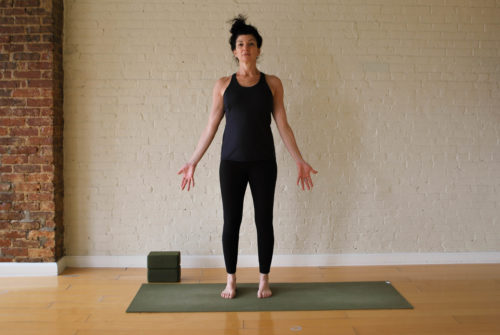
There are a lot of cues that people hear in yoga class where they may not know exactly what the teacher expects them to do. I had a conversation the other day and the person said, “I never really understand what “scissoring the thighs” means in Twisting Triangle!” This is a perfect example. As teachers, we need to think about what we’re going to say before we say it and strive to say things that are clear and easily implemented or we’ll just end up confusing the class.
One of the common things you might hear in class is “open the shoulders.” If there’s an “open shoulder” position, one would imagine there’s a “closed shoulder” too. Turns out, that’s true also. But what does that cue actually mean? Let’s take a look.
The shoulder joint is a ball and socket joint, which means the head of the upper arm bone, the humerus, has a ball and the scapula has a socket it fits into in a neat way, surrounded by muscles, ligaments and tendons to keep the connection secure yet moveable:
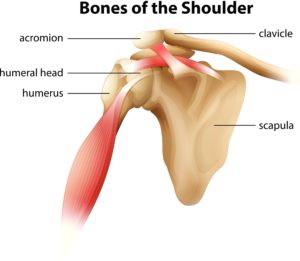
When we talk about “opening” or “closing” the shoulder ( we don’t typically say closed as much as we say open), we’re talking about one of the many actions the shoulder makes and that is of external and internal rotation.
If you look at the planes of the body, pictured below, rotational movements occur in the transverse plane:
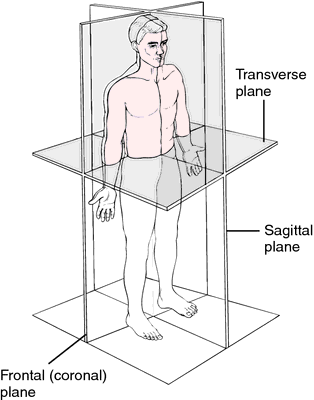
If we are standing in anatomical position as in the picture above, and we turn the palms forward, the shoulders are externally rotating (open). If we turn the palms backwards, the shoulders are internally rotating (closed). Even though I base almost all my cues on anatomy, I rarely say “externally rotate” but I might say “open” the shoulders. So, how do we help our students understand what that means?
Well, let’s think about what students can most likely relate to, when it comes to posture. They can most certainly relate to hunching because that’s a position they’re in a great deal. Whether it’s hunching over their computer or phone, chances are they know that shape. So, when I teach, I like to bring up that hunching, while we do it a lot, is really called “internal rotation” and it’s helpful to do the opposite, or open the shoulders. Once you explain it like this, people usually can understand it.
The challenge comes however, when you have people in different poses and they soon forget all that talk about hunching. Take for instance, side angle lunge and the student who is intently focused on adding an arm bind and ends up looking like this:
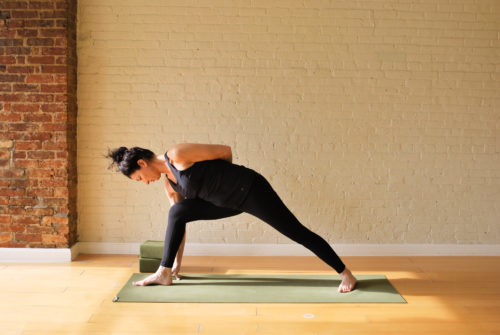
Can you see how I’m hunching towards the floor? This is so common in classes, I can’t tell you how many times I’ve had to speak to it. The reason students often find themselves in this position is 1- they don’t understand the point of the pose 2- they aren’t hearing cues that help them get out of this hunching shape 3- they have overly contracted pectoral muscles, as many of us do, because we’ve been hunching all day.
So, as teachers we can: 1- share the point of the pose including things like “opening” the shoulders. I basically say, “If you’re hunching in that upper shoulder and looking at the floor, see if you can roll the upper shoulder a bit more open and loosen the bind somewhat.” Again, if a student is practicing from ego, they’ll stay where they are. But if they’re open to hearing you, they’ll adjust the pose.
We have to tell people why we are asking them to do the poses the way we are and tell them what the point of the pose is! Without that context, there’s little reason to do it one way versus another. Including the point of the pose from the different joint actions can help students better understand and access the benefit of each posture.
Here’s the same pose, adjusted for the open shoulder:Â
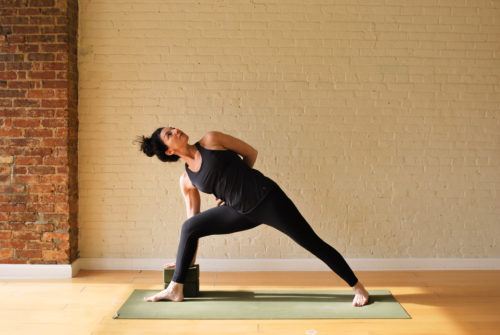
You’ll notice I’m also using a block, which helps me get that upper shoulder open by lifting higher off the floor.
If you like content like this, you’ll like my most recent book, “Structure and Spirit: Moving Smarter Both On and Off the Mat.” The book covers themes of anatomy and spirit and was released in May.
You can read reviews of the book and purchase it here.Â
Thanks so much for reading and as always, feel free to comment here!Â
